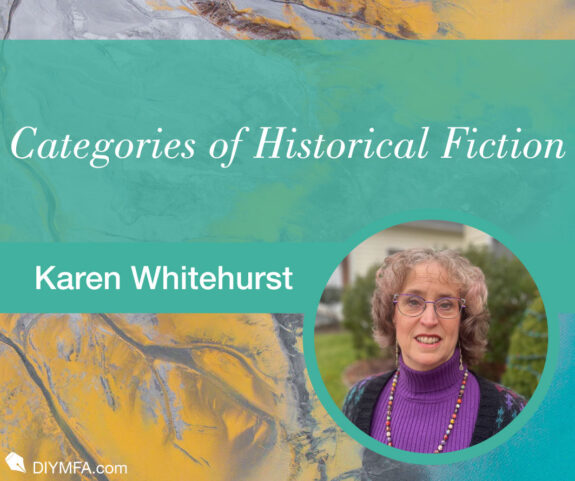Classification, like periodization, is arbitrary, and much of it derives from marketing. Where do we put in the bookstores, so interested people can find it? A quick tour of the internet, however, may lead us to paraphrase Ozzy Osbourne: How many bloody categories are there? Five, eight, ten?
Keeping in mind that historical novels need to do at least two jobs these days, here are the six basic categories of historical fiction:
Documentary
This category is defined by its historically accurate plot (all events are factually accurate) and cast of characters.
Sharon Kay Penman’s The Sunne in Splendor takes the Yorkist side in the War of the Roses, sees it through the eyes of Richard, Duke of Gloucester, who became Richard III. Another example would be The Killer Angels by Michael Shaara.
Romance
We’re here for the love story, for the star-crossed lovers—or in Diana Gabaldon’s Outlander series, the time-crossed lovers—who eventually get together. That happily-ever-after ending is a requisite in romance.
Evie Dunmore’s late Victorian romp, Bringing Down the Duke, fits the classic romance guidelines. Outlander is a time-travel novel, but c’mon, we came to Scotland with Claire for Jaime.
Mystery/Thriller
In mysteries, the reader gets the clues as the detective does; half the fun of a mystery is trying to solve the who—or why—dunnit ahead of the detective.
In thrillers, we strap in for the roller-coaster of emotion, usually clinging to the protagonists’ shoulders and urging them not to do something massively unwise, which, of course, they do.
The best mysteries/thrillers incorporate both elements.
In Ovidia Yu’s The Frangipani Tree Mystery, teenage sleuth Su Lin deals with murder, clue by clue, in the Straits-melting pot of late British colonial Singapore. Robert Harris’s Munich is a novel of an intrigue that fails, making it almost as much tragedy as thriller. Kate Quinn’s The Alice Network is an espionage novel that takes place in two wartime periods and contains a high degree of romance.
Alternative History & Historical fantasy
Alternative history is used as a technique for teaching history. Historical events are not inevitable, nor do they move inexorably from point A to point B in a linear progression. To break those mental blinders, alternative history changes an event and asks how that event would change history.
In Philip K. Dick’s The Man in the High Castle, the Axis won World War II. Harry Turtledove’s Guns of the South runs with the idea that a bunch of time-traveling Afrikaaners bring Robert E. Lee AK-47s to win the Civil War.
We can do the same things in fantasy by adding magic or supernatural elements. In Ars Magica, Judith Tar addresses Pope Sylvester’s reputation for magic while John M Ford’s The Dragon Waiting makes the Byzantine Empire a dark threat to Renaissance Europe, stopped only by one surprising man.
Biographical
Biography is best when it takes the life of a person to reveal the unknown and/or to investigate a time period and a society.
Anya Seton’s Katherine illuminates England during the Hundred Years’ War through the life of Geoffrey Chaucer’s sister-in-law, Katherine Swynford, whose liaison with John of Gaunt, Duke of Lancaster, helps produce the seeds of the War of the Roses.
More recently, Marie Benedict and Victoria Christopher Murray, in The Personal Librarian, have laid open both the accomplishments and sacrifices of Belle daCosta Green, the Black woman who curated J. P. Morgan’s fantastic collection of books, manuscripts, and art, all whilst having to pass as white.
Adventure
Sometimes, pirate/nautical and western fiction are separate categories. Why? They’re all adventures, involving some kind of quest and lots of action.
CS Forester’s Hornblower novels or the Aubrey and Maturin novels of Patrick O’Brien fit here; Louis L’Amour’s Sackett series is both western and family saga. Sarah Elisabeth Sawyer’s Tushpa’s Story, about the Choctaw experience of the Trail of Tears, also fits.
Multi-period epics and sagas
Any novel by James Michener or Edward Rutherford fits here. Their novels cover centuries, if not millennia. Multi-generation family sagas fit here, too, like North and South by John Jakes, or the “life” of a chateau, which covers centuries, in Stephanie Dray’s The Women of Chateau Lafayette.
I add two other categories of historical fiction:
Literary
Literary fiction tends to push the boundaries of what the forms of literature can support and/or takes a hard thematic stance.
Alice Walker’s controversial novel, The Color Purple, uses what she called Black folk speech or Ebonics to tell, in epistolary form, Miss Celie’s story of reclaiming her power. Gayl Jones, in Palmares, tells the story of Almeyda, an enslaved woman, both Black and Indian, who escapes to Palmeres and then journeys to find her husband. Jones pushes language and form in bringing into focus the greed, violence, and passion of colonialism.
Horror
This category will sometimes be called Gothic because these stories, which began in the 18th century, usually involve overwrought senses, paranormal elements, and terrible deeds. A spooky house is almost a requisite. Suspense is key in this genre, and so they’re sometimes classed with mystery and thriller.
Patrick Süskind’s Perfume, set in 18th century France, takes one man’s ruling passion and turns it into obsessive depravity and murder. The Hacienda by Isabel Cañas, set in 19th century Mexico, has the spooky house, folkloric magic, and deadly deeds.
And that wraps up our tour of the categories of historical fiction. Some are easier than others to publish, but there is something out there for everyone’s taste.

A former college professor, Karen Whitehurst holds a Ph.D. in British history from the University of Virginia. She currently resides in Maryland with one long-suffering husband, three naughty cats, and over one hundred houseplants. A writer of both historical mystery and SF & F, she is currently at work on a mystery set in 18th century England during the Gordon Riots.
For more information, visit her website.







